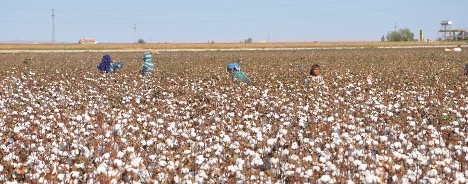
In June 2013, the Dutch government, civil society organizations, and industry representatives collectively developed an action plan to improve the social, structural, ecological, and economic conditions in the global garment and textile supply chains. The Working Group on Child Labour established under this Action Plan has launched this pilot project with the Fair Labor Association and Development Workshop Cooperative to map, identify, and mitigate child labor risks in Turkish cotton farms, textile mills, and apparel factories involved in producing garments eventually sold to Dutch consumers.
The Development Workshop’s field reports show that children in the cotton harvest in Turkey are working an average of more than six days per week, with an average of 11.35 working hours per day. Many children drop out of school, can be injured or killed in workplace accidents, and suffer poor living conditions, a harsh work environment, and malnutrition. Although some data exist documenting work performed by children on cotton farms, there is not yet any systemic data for the garment industry as a whole, documenting the use of children in cotton ginning, spinning mills, or textile mills. Similarly, there is limited information available about the presence and working conditions of Syrian migrant children in the Turkish cotton supply chain. The objective of this project is to map these roles across the supply chain and improve the lives of these children by working collaboratively with the Working Group to mitigate the root causes of child labor. The collaborative activities of the project included:
- Engagement with companies (retailers) to map their upstream clothing and cotton supply chain in Turkey;
- Engagement and collaboration with Tier 1 suppliers based in Turkey to map their upstream cotton supply chain including textile, spinning, and ginning mills;
- Introducing tools and procedures for companies and suppliers to systematically collect information about the presence and risks of child labor in their supply chain;
- Working with companies and Tier 1 suppliers to design child labor risk mitigation strategies;
- Sharing of methodology and project outcomes with stakeholders in a convening in Turkey in 2016;
- Providing timely and periodic updates to the Working Group and other companies; and
- Defining future strategies (including scaling up future activities with the Working Group).